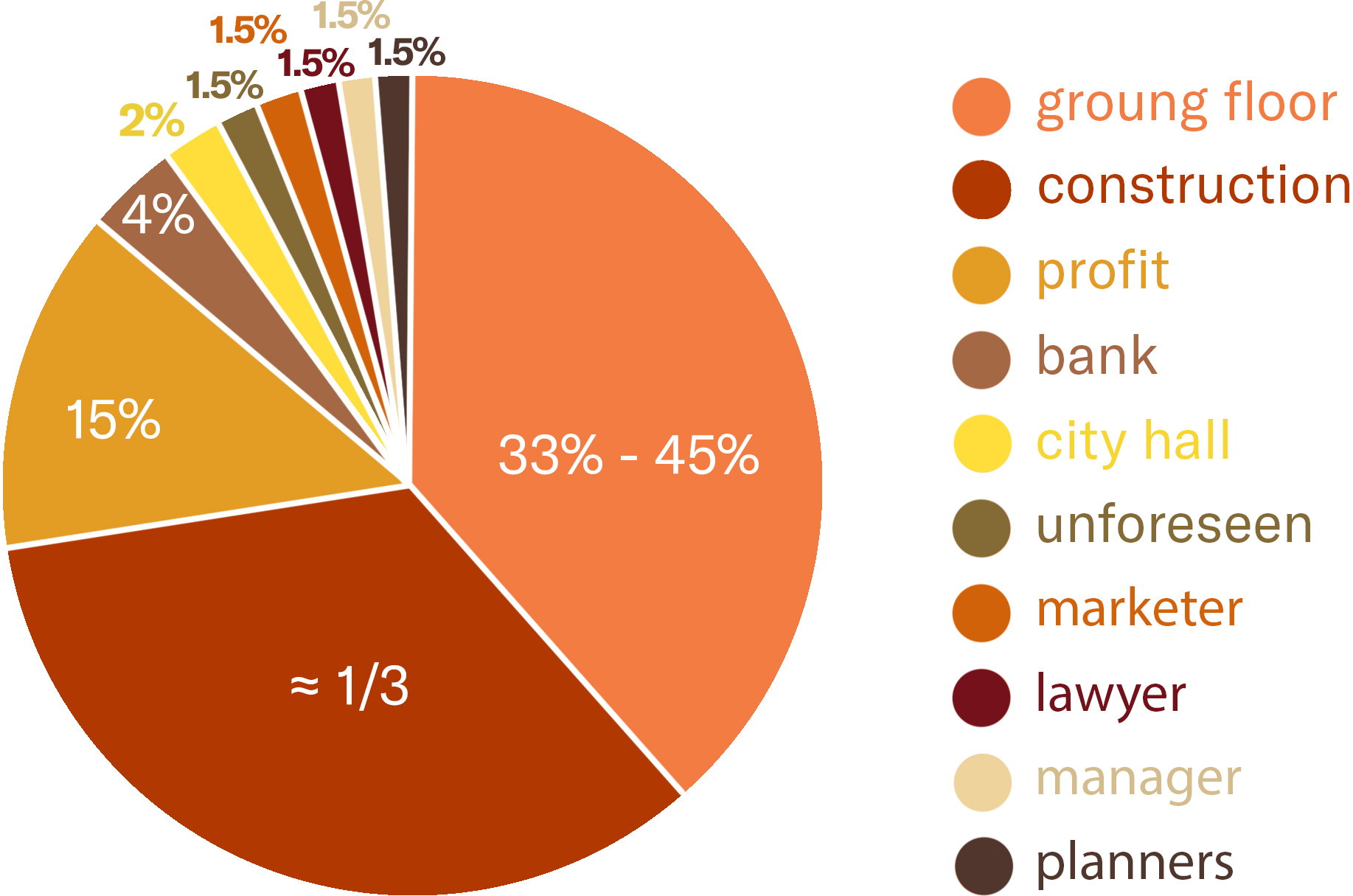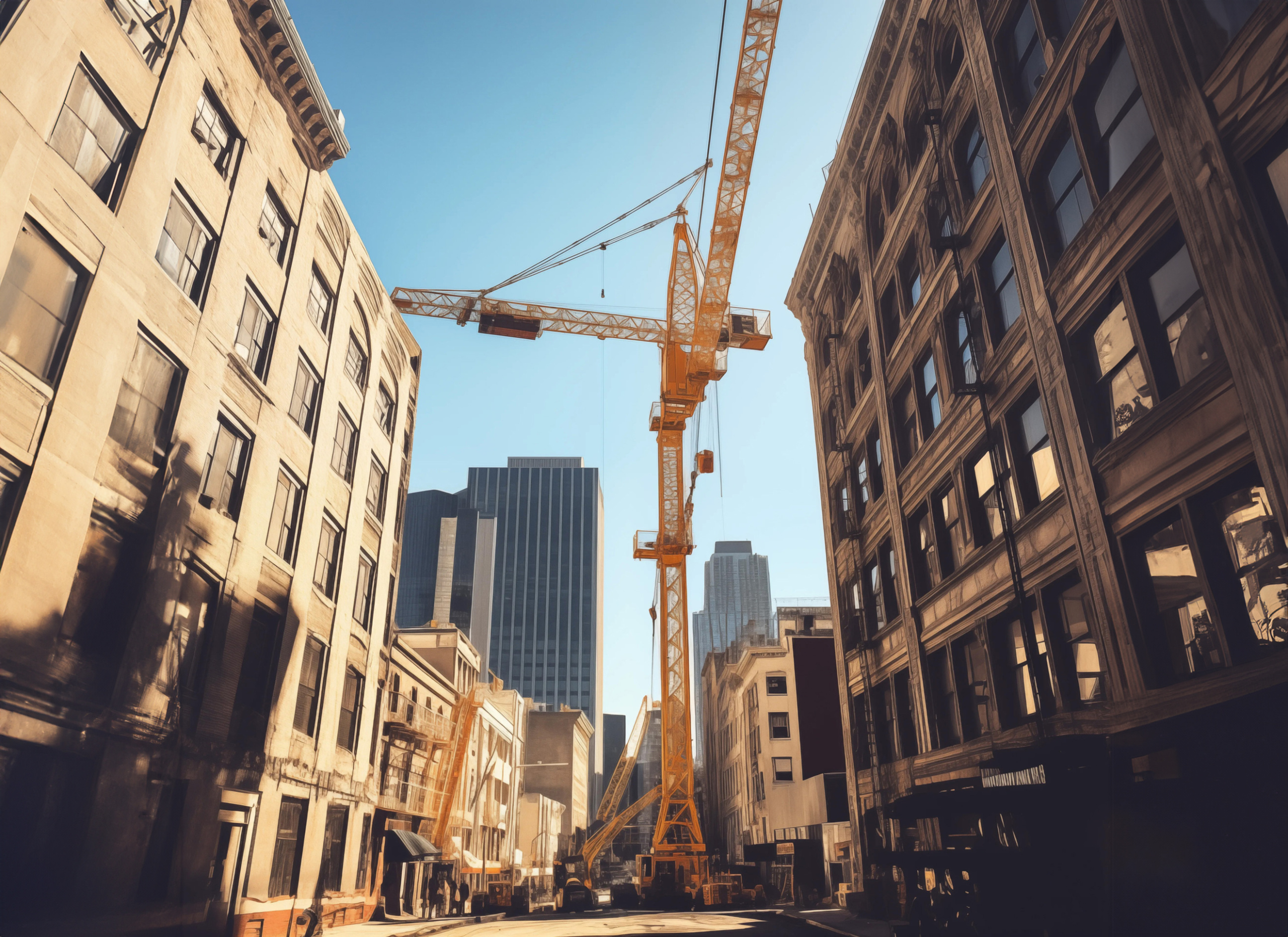How Much Does It Cost To Build?
Who are the players in a real estate project? And what is their share of the “pie” of cost and revenue?
This is the “pie” – which contains all the project’s costs and the entrepreneurial profit (what is left of the income minus the costs). The total “pie” is equal to the revenues of the project. The percentages are estimated according to the national average.

Costs
The largest portion of project costs typically is the land, which can range from a third to approximately 45% of the total.
The cost of the land for each housing unit and its relative share of the price of the apartment varies according to the region in the country.
Starting from 500 thousand NIS per unit in the periphery to about 2.5 million NIS per unit in areas of demand in Tel Aviv. (As of 2021)
Construction costs average around 5,000 NIS per square meter for apartments and common areas, with additional expenses for balconies and parking totaling about 3,000 NIS per square meter. Landscape development incurs a separate cost of approximately 500 NIS per square meter.
Construction costs vary and depend on the standard and height of the building.
It is customary to calculate unforeseen expenses in advance as 5% of the construction costs, which constitute 2% of the total “pie”.
Additional indirect costs are the financing and guarantees given by the bank, about 4% of the “pie”.
The municipality collects about 2% of the pie in fees and charges.
The professionals involved in the project are a marketer, a lawyer, a manager-supervisor and designers. Each of them gets about 2%-1.5% of the pie.
Designers (planners) receive about 1.5% and it includes the architect and the entire team of consultants for the project. Of these, the architect receives about half to a third, that is, about 0.5% of the pie. As you can see, this is a very small part of the cost of establishing the project.
The planning part needs to grow and adapt to international standards to improve the quality of projects in Israel.
An example project
Let’s consider for example a residential building project of 45 apartments, 12 stories high, above a parking lot in the city of Holon.
The total project pie is NIS 100 million
The land owner receives NIS 880,000 per unit = NIS 39.6 million
The contractor receives NIS 33.7 million
(for 5,300 square meters built, 540 square meters of balconies, 1,700 square meters of parking, 500 square meters of yard)
The entrepreneur’s profit at the end of the project amounts to NIS 13 million
The bank takes about 4% for financing and guarantees = NIS 4 million
The municipality receives 2% = NIS 2 million
Unforeseen expenses, typically 5% of the construction expenses = NIS 1.7 million
The apartment marketer receives 1.5% of the pie plus VAT = NIS 1.7 million
The lawyer receives 1.5% of the pie = NIS 1.5 million
The project manager receives 4% of the construction costs, which in this case is 1.4% of the pie = NIS 1.4 million
Designers – all the planners together also receive NIS 1.4 million
(of which the architect is about a third = 450 thousand NIS)
As mentioned, the revenues for the project are NIS 100 million (sale of 4,700 square meters of apartments at NIS 21,000 per square meter)
Pinui Binui (urban renewal)
Pinui Binui is a process that permits the replacement of old housing complexes and their outdated infrastructures by a large number of new apartment buildings. Under this scheme, existing residents enjoy new and more spacious apartments, without having to leave the neighborhood they know and love.
The calculation for these projects is different because it is a combination deal between the apartment owners and the developer. The apartment owners bring the land, and the developer builds the apartments for them, and the apartments for sale. In addition, there are additional costs such as the demolition of the existing building, transportation and rent for the tenants during construction, a lawyer and an inspector on their behalf, and more.
And the big beneficiary is the state
The main beneficiary of all this activity is the State of Israel.
It receives taxes (purchase tax from the buyer, and “improvement” tax from the seller)
Receives VAT at the rate of 17%
Income tax is received from the entrepreneur and all the professionals involved.
And if the land is owned by the state, the Israel Land Authority, it is generally a profitable business.
So, Bon Appetit and make some income!
